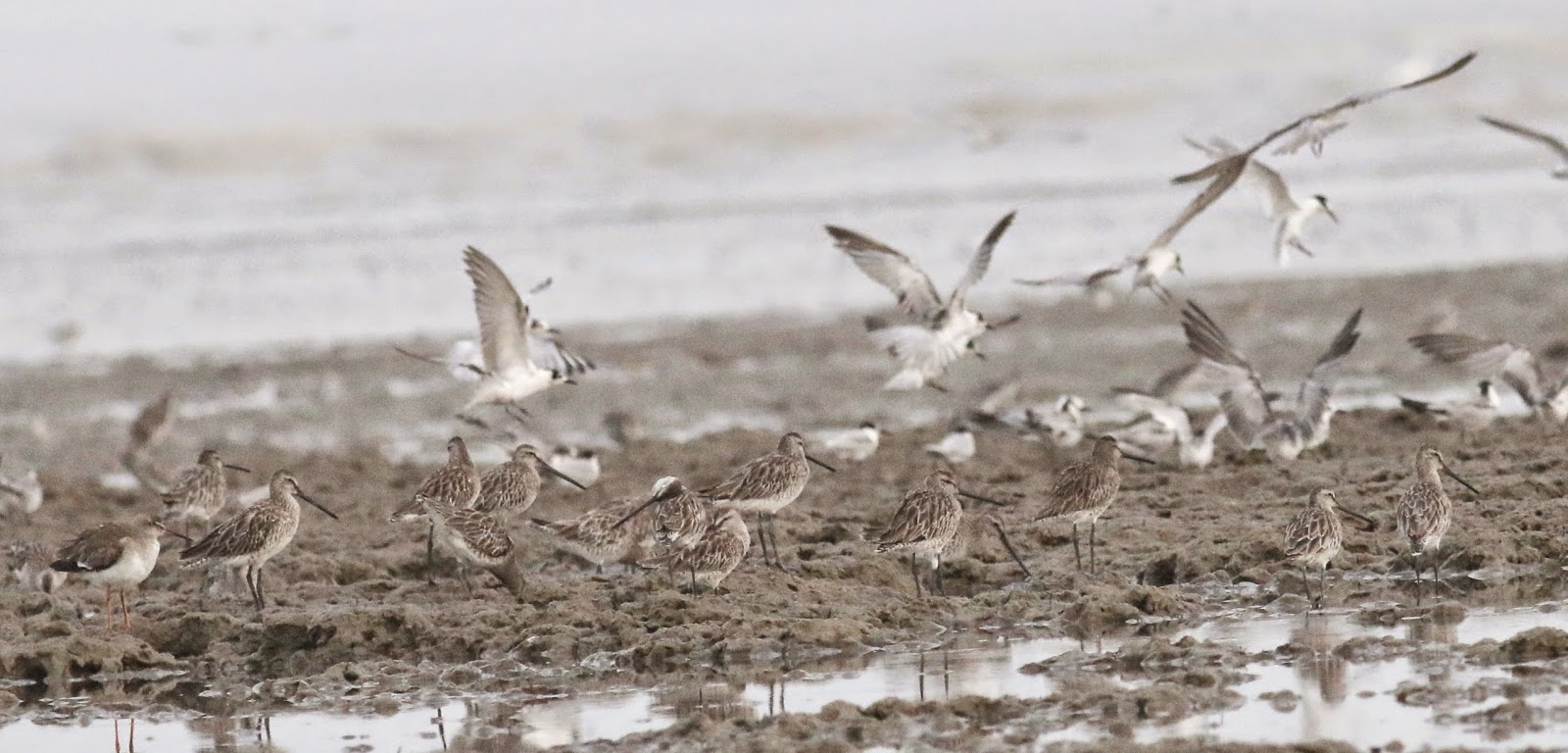There are not many people who realise that there are some big differences between a birder and a bird photographer. A bird photographer is where you will see a bunch of people / a person with big lenses or at times medium size lenses standing, squatting or sitting at a particular place for hours and hours hoping to get the best photos from a particular species of birds. On the other hand a typical birder would go all out to climb the highest mountains, sail the 7 seas and forage into the deepest forest to see as many birds as possible and at the same time meticulously studying their features, abnormality, origins etc. Both types can be considered as "bird watchers extraordinaire" at the extreme ends but bird watching can be an exciting hobby to take up if you can space yourself in between the two extreme ends
In watching birds especially waders, the best times would be early morning i.e between 7.30am - 11.00am (pleasant weather and good for photography as well) or late evenings (5.30pm to 7.00pm) where light permits. In my recent excursions to the coastline of West Peninsular Malaysia to watch waders, i have had 2 sessions in the mid afternoon (4.00pm to 6pm) which nearly turned me into a half boiled egg. A little longer in the hot mudflats i would have been a "Ham Yee" (salted fish). This is a continuation from the first part of my report and here are some of the additional photos taken.
 |
| Common Sandpiper |
A very common wader indeed.
 |
| Broad-Billed Sandpiper |
 |
| Curlew Sandpiper |
 |
| Lesser Sand Plover |
In Craig Robson's field guide, it was mentioned that there are some subspecies of Lesser Sand Plover called mongolus and atrifrons ! Could the above birds be one of them?
In the recent excursions to the mudflats, i dipped on a few interesting waders such as the Spoonie, Little Stint, and Lesser Crested Tern but i did scored on some others such as Caspian Tern, Greater Crested Tern, Red Knot, Ruddy Turnstone and Asian Dowitcher. Here are some of the Asian Dowitchers seen:
Asian Dowitcher butts !
Here comes the Asian Dowitchers
An unusual way to make a landing
Look how small is the Asian Dowitcher as compared to the Brown-Headed Gull. We need to respect these birds as they have travelled close to 5,000.00 km from Siberia and Russia. Very soon they will be going back again and that is another 5,000.00 km trip ! However more importantly is that their wading sites should be preserved and be ensured that it is not polluted or disturbed.
 |
| Black-Tailed Godwit |
 |
| Whiskered Tern |
 |
| White-Winged Tern |
You can see the difference in the wing shape of the White-Winged (left) and Whiskered Tern from the above photo.
I was also lucky to record three largest terns which can be found in Malaysia and here they are:
 |
| Gull-Billed Tern |
Wing span is about: 76 - 91 cm (30 - 36 in)
 |
| Great Crested Tern |
Wing span is about: 125 - 130 cm (48 - 52 in)
The largest of em all should be the Caspian Tern.
 |
| Caspian Tern |
Wing span is about: 127 - 145 cm (50 - 57 in)
Of course the smallest of them should be this Little Tern
 |
| Little Tern |
Brown-Headed Gull have been present in the waters of West Peninsular Malaysia for almost every year since probably in the early 1990s
 |
| Brown-Headed Gull |
 |
| Chinese Pond Heron |
When they have reached this stage of transformation you can almost tell which pond heron species it belongs to.
 |
| Adult Little Heron |
 |
| Juv/Sub Adult Little Heron |
These terns and Brown Headed Gull seem oblivious to the presence of human beings.
I wish one day my country will have its own Wader Research Centre so that a more consolidated research and study can be made on the types and behaviors of the various migrant shorebirds which have made our shoreline their winter base.


























































